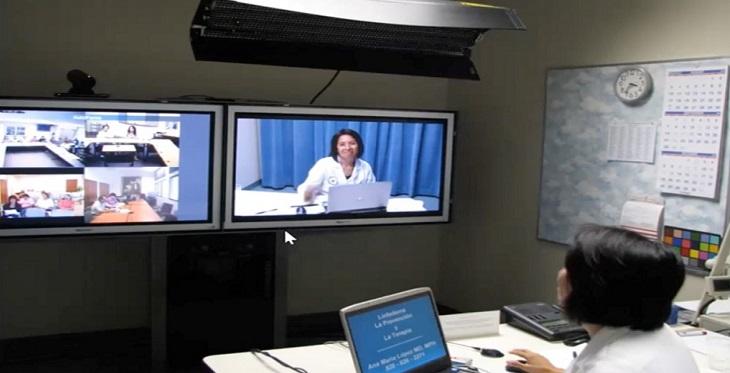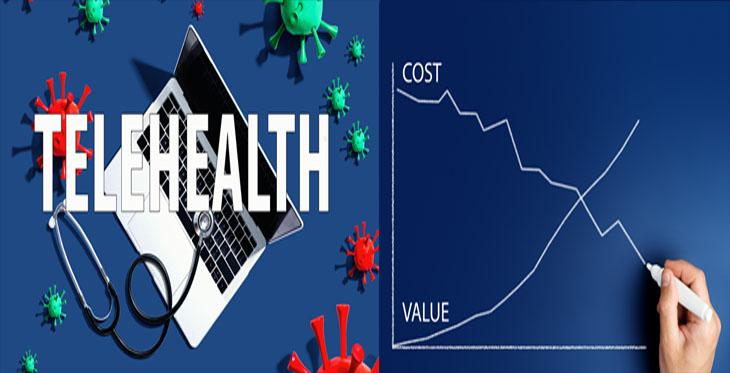I don’t think I need to say why everyone was more than ready to say goodbye to 2020. Even New Year’s Eve was probably the most subdued we’ve ever had. It was sad to watch the ball drop in NYC without a soul in site, but we stayed up anyway by watching old Abbot and Costello skits from the Colgate Hour – amazing what you can find these days and it’s hard not to laugh at “Who’s on First” no matter how many times they do it.
What’s to look forward to in 2021? Infinite possibilities! New Year’s offers the opportunity to envision all sorts of new and exciting things ahead and to reset the course of our lives and events. I have high expectations for 2021, saying goodbye to the trials of yesterday while holding firmly to the triumphs and lessons learned last year. The road ahead is wide open and our gas tanks are full – drive on everyone to new adventures!
Southwest Telehealth Resource Center Blog

By Nandini Sodhi on
The Southwest Telehealth Resource Center (SWTRC) and the Arizona Telemedicine Program (ATP) had the pleasure of working with the United Way of Weld County, CO to provide a webinar to their membership on November 6, 2020. “Effectively Engaging Families in Telehealth” was a very informative and addressed one of the most asked questions about telehealth, how does a provider build an intrapersonal relationship through a screen? Janet Major, Associate Director for Education & Facilities for SWTRC/ATP and Dr. Elizabeth Krupinski, Co-Director, STWRC addressed this question with the central message being that physicians and their support staff need to prepare for each telehealth visit. If a provider is prepared, the visit should go smoothly and an intrapersonal relationship can be established just like an in person visit.

By Jan Ground, PT, MBA on
How can we make sure telehealth processes are making a difference that matters? Having led virtual care for Kaiser Permanente Colorado, what matters most to me is that we are finding ways to make care less expensive and/or with better clinical outcomes.
We have some proof that telehealth improves clinical outcomes. Video visits significantly decrease no-shows for mental health care. Remote patient monitoring significantly increases patient engagement in managing chronic disease. Most trust that no-shows and patient engagement are good surrogates for improved outcomes. However, the evidence that telehealth processes lead to decreased cost and/or improved clinical outcomes is less clear.

By Kristine Stewart on
We pause each November to give thanks. This year, more than ever, it is important to give thanks. For many of us, we are thankful that everyone now knows what telemedicine is and are actively using it even though many of us have been supporting telemedicine and telehealth for well over 20 years. We asked a few friends and colleagues in the Southwest region “What are you thankful for?” and below are their responses. We hope that you too will be thankful.
“I am extraordinarily thankful, now more than ever, for both my health and my financial stability. I am also thankful that there has been a burning platform for, and therefore a tremendously increased use of telehealth processes, by both clinicians and consumers. Finally, I am thankful to be able to significantly increase my contribution to the improvement of the US healthcare system as a result of the increased interest in telehealth processes.”

By Nandini Sodhi on
COVID-19 has overstayed it welcome for most of us. Everyone’s lives, across the nation and world, have changed drastically in the last nine months. While COVID-19 has impacted everyone, everyone’s experiences have been different.
This summer, I had the privilege to speak to Carol Lewis about Yavapai county, Arizona’s experience and how rural centers are handing the pandemic. But even rural centers experience the effects of the pandemic differently from each other. To explore different experiences across the southwest, I reached out to The Wayne Community Health Center in the rural town of Bicknell, Utah. Bicknell is one of the 10 communities that make up Wayne County. Wayne county contains about 2,475 square miles (105 miles long and 23 miles wide) in south central Utah, 97% of which is federal and state land. The population of Wayne county is about 2700 and there is only one medical doctor in the county to serve them. Of 2700 people in Wayne county approximately 81% of them have health insurance. The demographic of the population is mostly Caucasian (91%), with the median age and income being 41 years and $45K respectively.


